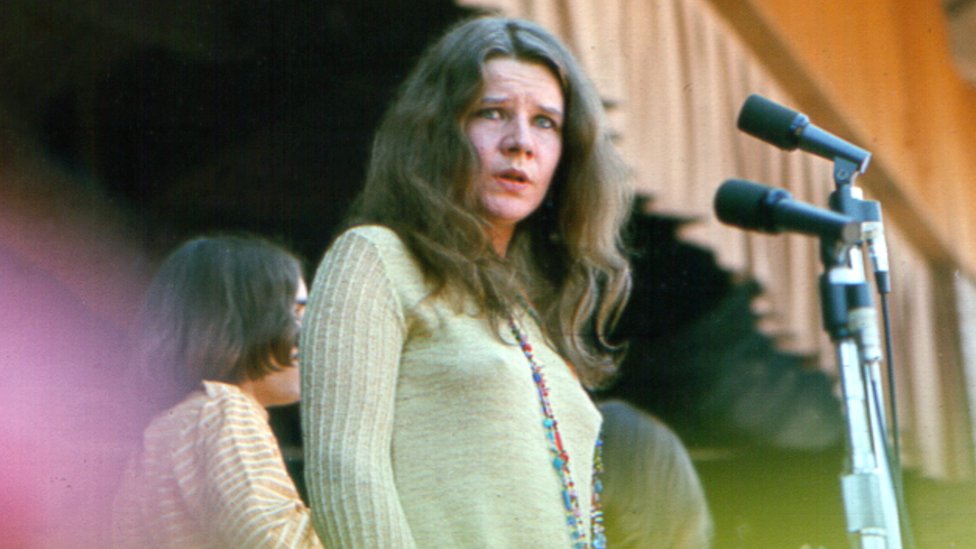Janis Joplin, the indomitable queen of rock and roll, continues to captivate audiences worldwide with her raw, powerful vocals and charismatic stage presence, even five decades after her untimely death. However, her sudden and tragic demise at the age of 27 has been a topic of intrigue and speculation, stirring numerous theories and debates. The enigma surrounding how did Janice Joplin die is as captivating as the riveting life she led.
Quick Bio
Born on January 19, 1943, in Port Arthur, Texas, Janis Lyn Joplin grew up in a conservative and conventional environment that starkly contrasted with her future persona. Struggling to fit in, she found solace in music from an early age, idolizing blues and jazz legends like Bessie Smith and Odetta. Janis’s teenage years were marked by a rebellious streak and a longing to escape the constraints of her small-town life.
During her early days at Thomas Jefferson high school, she was already singing blues and soul music with her friends.
Janis’s quest for self-discovery led her to San Francisco during the mid-1960s, where she became an integral part of the burgeoning counterculture movement. Embracing the hippie ethos, she thrived in the bohemian atmosphere of Haight-Ashbury, experimenting with drugs and exploring her artistic inclinations. It was during this time that her distinct vocal style and captivating stage presence began to emerge.
Janis’s breakthrough came when she joined the psychedelic rock band Big Brother and the Holding Company in 1966. Her electrifying performances and soulful voice quickly garnered attention, and the band’s appearance at the Monterey Pop Festival in 1967 propelled Janis and the group into the national spotlight. The release of their album “Cheap Thrills” further solidified Janis’s status as a rock icon.
Janis’s desire for artistic independence led her to leave Big Brother and embark on a solo career. Her debut album, “I Got Dem Ol’ Kozmic Blues Again Mama!” showcased her evolution as an artist, blending rock, soul, and blues influences. Despite her professional success, Janis battled personal demons, struggling with substance abuse and a constant yearning for acceptance.
In 1970, Janis recorded what would become her magnum opus, the album “Pearl.” Fueled by hits like “Me and Bobby McGee” and “Mercedes Benz,” the album encapsulated her raw vulnerability and immense talent. Tragically, on October 4, 1970, Janis Lyn Joplin passed away due to a heroin overdose at the age of 27, joining the infamous “27 Club” alongside other musical legends.
Janis Joplin’s legacy endures through her groundbreaking contributions to music and her unapologetic, authentic self-expression. Her influence continues to inspire countless artists across genres, and her impact on women in rock remains immeasurable. Janis’s story serves as a testament to the power of an individual’s passion, determination, and willingness to defy conventions.
The Meteoric Rise of Janis Joplin
Born in 1943 in Port Arthur, Texas, Janis Lyn Joplin’s journey from a small-town girl to a global rock icon is a testament to her incredible talent and unwavering spirit. Her unique blend of rock and blues, coupled with an electrifying stage presence, quickly catapulted her to stardom in the late 1960s. Her music, personified by soul-stirring hits like “Piece of My Heart” and “Me and Bobby McGee,” resonated with the counterculture movement of the era and continues to inspire musicians today.
She was also part of the Full Tilt Boogie Band. The Canadian rock band was originally headed by guitarist John Till, and then by Janis until her death. It was composed of Till, pianist Richard Bell, bassist Brad Campbell, drummer Clark Pierson, and organist Ken Pearson.
Janis Joplin’s Final Days: A Timeline of Events
In the lead-up to her death, Miss Joplin’s life was characterized by a hectic schedule packed with recording sessions and performances. Her excessive use of drugs and alcohol had taken a toll on her health and her last performance at the Harvard Stadium in Boston, on October 3, 1970, was described as lackluster and uninspired.
The following day, on October 4th, 1970, Joplin was found lifeless in her hotel room at the Landmark Motor Hotel in Hollywood, California. Joplins death sent shockwaves through the music world and left fans worldwide mourning the loss of this irreplaceable rock legend.
An Examination of the Death Scene
The scene of Joplin’s death painted a grim picture. Her hotel room was in disarray, with empty liquor bottles and drug paraphernalia strewn around. The room bore the evidence of heavy drug and alcohol use, and the smell of substances lingered in the air. The sight was a stark reminder of Joplin’s struggle with addiction, a battle she ultimately lost.
The Autopsy Report: A Controversial Verdict
The official autopsy report concluded that Joplin died from a heroin overdose, a common cause of death among musicians in the 1960s and 1970s. The report also revealed evidence of long-term heroin use, with needle marks visible on her arms. This finding supported the theory that Joplin had accidentally overdosed on heroin.
Disputing the Official Cause of Death
Despite the official ruling, numerous discrepancies and unanswered questions led to the proliferation of alternative theories surrounding Joplin’s death. Peggy Caserta, a close friend of Joplin, has been a vocal critic of the overdose theory. In her memoir, “I Ran Into Some Trouble,” Caserta shared her observation of the death scene and questioned how Joplin could have overdosed and still walked to the hotel lobby to buy cigarettes.
Caserta proposed an alternative theory, suggesting that Joplin died not from a heroin overdose but from asphyxiation resulting from a fall. According to Caserta, the heels of Joplin’s sandals might have gotten caught in the shag carpet, causing her to trip and break her nose. Joplin then possibly fell into a drug-induced sleep and choked on her own blood.
Remembering Janis Joplin: The Music and Legacy
Despite the tragic circumstances of her death, Janis Joplin’s legacy lives on. She remains an inspiration for countless musicians, particularly women in the male-dominated rock industry. Her profound influence on the music world has been celebrated through numerous documentaries, books, and even a Broadway show, “A Night with Janis Joplin,” which premiered in 2013.
The Unresolved Mystery: The Final Verdict
Despite various theories and speculations, the exact circumstances of how Janis Joplin died remain a mystery. However, as we commemorate her life and legacy, the cause of her death becomes less significant. What truly matters is the indelible mark she left on the world of music. Her spirit, encapsulated in her powerful music, continues to resonate with audiences worldwide, making her an immortal icon of rock and roll.
The Bittersweet Legacy of the 27 Club
Joplin’s untimely death at 27 links her to a group of artists known as the “27 Club.” This infamous club includes other talented musicians like Jimi Hendrix, Kurt Cobain, and Amy Winehouse, who also tragically died at the age of 27. The common thread linking these artists is not just their age but also their struggles with substance abuse and mental health issues.
A Final Tribute to Janis Joplin
Janis Joplin’s life, though tragically short, was filled with passion, creativity, and a relentless pursuit of her musical vision. Her death remains a grim reminder of the dangerous grip of substance abuse. Yet, through her music and the memories she left behind, she continues to inspire and captivate audiences worldwide. As we reflect on how Janis Joplin died, let’s also remember how she lived: as a fearless woman who broke barriers and revolutionized the world of rock and roll with her unique voice and indomitable spirit.






